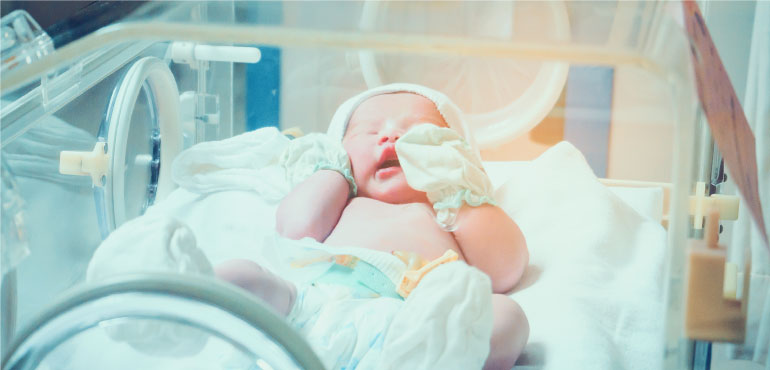A mother and child are connected more deeply with threads of emotions and affection than the placenta. This is why babies respond to their mother’s touch after birth. Of late, recognizing the importance of skin-to-skin contact between mothers and their babies, a lot of neonatal intensive care units (NICU) are creating a nurturing environment for the same.
This is where KMC (Kangaroo mother care) comes into play. It is a method of holding a newborn baby on the bare chest of the mother. This method of care is extremely important for babies in the NICU and is beneficial for both babies and their parents.
What is the History of Kangaroo Care in the NICU?
Kangaroo care or the Kangaroo effect was first coined in the late 1970s by physician researchers Edgar Rey Sanabria and Héctor Martínez-Gómez. Looking at the difficulties of both premature newborns and parents, they introduced kangaroo care for newborns which revolved around the method of simple skin-to-skin contact. The benefits of kangaroo mother care were evident and even reduced infant mortality rate up to 50%.
Since then, the best NICU care hospitals adopted this practice and promoted kangaroo care after c-section.
What Are Kangaroo Care Benefits?
Kangaroo care in the NICU has been shown to provide various benefits for both premature infants as well as their parents. Its amazing benefits include:
Regulating Baby’s Body Temperature
Research has shown that holding babies close to the chest can help them to regulate their body temperature more effectively. A study revealed that neonates who engaged in skin-to-skin contact during kangaroo care showed stable body temperature and less incidence of hypothermia after the care sessions.
Improving Breast Feeding and Infant Weight Gain
Research has also shown that kangaroo care has a positive effect on breastfeeding. A study revealed that infants who received kangaroo care had longer breastfeeding sessions as compared to those who did not receive kangaroo care in the NICU. This way, babies with kangaroo care also showed considerable weight gain.
Promoting Bonding
Kangaroo care also has the potential to foster a deeper connection between the mother and the child. This care enables the mother to hold her baby close and develop a bond with the child. This connection plays a significant role in the NICU and provides a familiar touch to the baby.
Reducing Stress
Kangaroo care has also been shown to reduce stress in premature babies and their parents. Skin-to-skin contact releases a hormone called oxytocin which helps in blocking the body’s stress response. A study revealed that babies who received kangaroo care for 90 minutes per day showed a reduction in preterm and maternal cortisol levels as well as postpartum depression.
Reducing Pain Response
There are enough studies that corroborate the effect of kangaroo care in reducing a baby’s response to pain. Since babies in the NICU undergo painful procedures, a reduction in pain is paramount in the setting.
How to Do Kangaroo Care?
Holding your baby in the NICU is different as it also involves certain precautionary steps by the neonatal hospital. In general, the steps include:
- Sit on a comfortable chair or bed (Reclined)
- A neonatologist/mother will remove the baby’s clothes and leave only the diaper on.
- Create a space on your chest to place the baby and remove any clothing that may create a barrier.
- Place the baby upright on the chest, facing yourself.
- Cover the baby’s back with a blanket or cloth to keep them warm and comfortable.
- Keep the baby in this position for at least an hour.
- Practice this multiple times (at least 8 hours) a day or as suggested by your neonatologist.





Comments